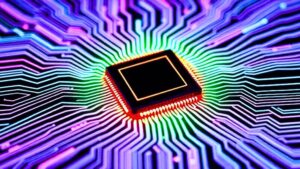It is believed that life first appeared on Earth 3.5 billion years ago.
So how did life first begin?
All forms of life are incredibly complicated. On the other side, chemical evolution is the process by which simple inorganic molecules like carbon, hydrogen, nitrogen, and oxygen are transformed into complex organic molecules like microorganisms through chemical reactions in the seas. Chemical evolution is the initial step in the emergence of life on Earth. Less than a billion years have passed since the beginning of chemical evolution in the history of life. Today, numerous chemical evolution phases may be regularly seen in labs.
SINGLE ORGANIC MOLECULE FORMATION
The foundation of life are simple organic molecules, such nucleotides. Research suggests that organic molecules may have formed in the atmosphere during the early Earth’s history and then rained onto the oceans. The genetic building blocks of all life, RNA and DNA, are only made up of lengthy sequences of basic nucleotides.
EVOLUTIONARY NATURAL SELECTION OF PROCESSING MOLECULES
Every living creature reproduces by giving its genetic material to its progeny. Therefore, for life to arise, it must be able to duplicate the molecules that carry genetic information. This trait likely makes an appearance for the first time in a self-replicating RNA.
Many biologists believe that this process results in a “RNA world” where RNA performs numerous tasks, including storing genetic material, duplicating itself, and carrying out fundamental metabolic processes. Today, several different molecules (DNA, RNA, and proteins) perform these functions.
Natural selection was made possible through self-replication. Newly created molecules gathered minor changes as a result of this ongoing natural selection process, eventually leading to a reliable, effective replication machinery.
ENVIRONMENT OF CELL MEMBRANE PROCESSING MOLECULES
Two major benefits resulted from evolution’s creation of a membrane around the genetic material: the products of the genetic material could now be retained close by, and the internal environment could be distinct from the external world. Cell membrane-containing molecules had an advantage over those without. The outcome was a creature that closely resembled current bacteria.
MODERN METABOLISM PROCESSES ARE INVOLVED IN SOME CELLS
Up until now, RNA was the primary fuel for most essential function. But everything changed when some cells or groups of cells started using different types of molecules for different functions, such as proteins, which are frequently more effective at initiating chemical reactions than RNA, DNA genetic material, which is more stable than RNA, and RNA in the cell, which is in charge of the basic metabolic reactions in the cell. It evolved into the information carrier from DNA to the nucleosomes of proteins. These advances made it simple for cells to eliminate older RNA-based cells, putting an end to the RNA universe.










